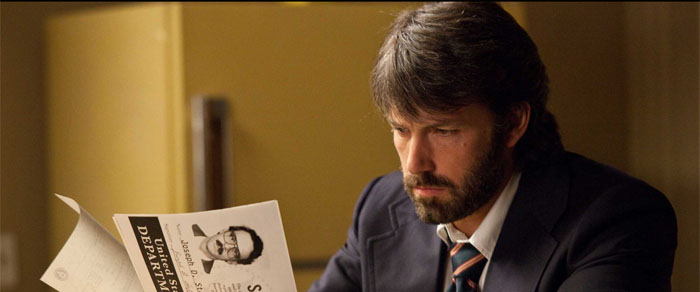
A story that’s bizarre, complicated, and shockingly true, “Argo” tells the tale of the CIA’s plan to rescue six U.S. embassy workers who escaped the American consulate during the Iran hostage crisis of 1979. Disguised as location scouts for a fake sci-fi movie (for which the movie is named), the four men and two women are supposed to be led out of the country by CIA agent Tony Mendez (Ben Affleck), a task that proves fraught with danger and leads the film to its dramatic end.
Directing and starring in the film, Ben Affleck gets a chance to show his varied talents. Affleck deftly expresses Mendez’s anxiety over the fate of the mission while still upholding the stoic facade the agent must maintain. Deep in character, from his thick beard to even thicker hair, Affleck portrays the various facets of a man who knows his failure means certain death for himself and six others.
It is Affleck’s directing, however, that truly shines throughout the film. Cutting quickly between Hollywood, the State Department, and Tehran, Affleck keeps the pace of the movie rapid, matching the escalating tension of the crisis. A departure in location and topic from earlier projects, like “Gone Baby Gone” and “The Town,” Affleck handles the variety of international locations as well as the convoluted plot with ease. Compressing the background of the conflicts between Iran and the West into a short scene at the start of the film gives the audience enough knowledge to follow the plot, and detailed dialogue helps viewers understand the crisis as it unfolds.
Just as crucial as the directing, the film’s unerring attention to historical details helps create a believable world that enthralls the audience. From the use of the 70s Warner Bros. logo at the start to the deliberately grainy effect film effect that makes the movie seem thoroughly authentic, minute details make the entire work come alive. The crowds around the U.S. embassy in Tehran chant the same slogans actually used during the crisis and even fast food wrappers are printed with 70s McDonalds logos, all of which gives viewers the sense that they have stepped back into the past. The success of such great attention to detail is most apparent at the end of the film, where shots of the actual six escapees, Mendez, and others are almost indistinguishable from those of the actors.
Despite its serious subject matter, “Argo” is dryly humorous, with the producer of the fake movie, Lester Siegel (Alan Arkin) and makeup artist John Chambers (John Goodman) providing comic relief that starkly contrasts with the tension of the scenes in Tehran. Both witty characters, their scenes together are sharp and hysterically funny, ensuring that the film is not entirely dark and serious.
The film’s build up to its dramatic conclusion is fast-paced and well executed, though the climax of the movie gives way to typical Hollywood theatrics, departing somewhat from the accuracy of the rest of the work. The scenes in which the plan is laid out are quick though easy to understand, which helps add to the mounting tension surrounding the embassy workers’ escape. Though the film dramatizes the final escape scene, the ending still seems logical and gives viewers a sense of closure.
Rated R for language and some violence, “Argo” is not a movie for those younger than 13. Its complex plot and historical significance would be lost on most young viewers, and Arkin’s continuous swearing make it unsuitable for younger audiences.
A fast-paced movie with excellent performances and richly detailed sets, “Argo” is a must-see fall movie. Expect to see this one bring home an Oscar.
by KAVYA PATHAK






